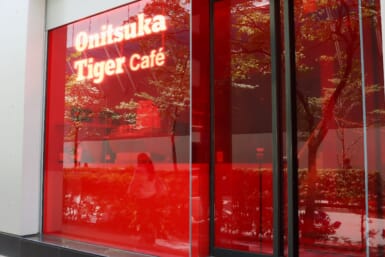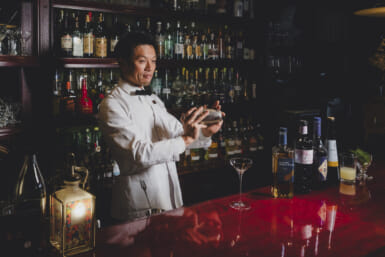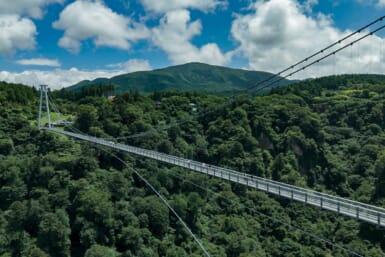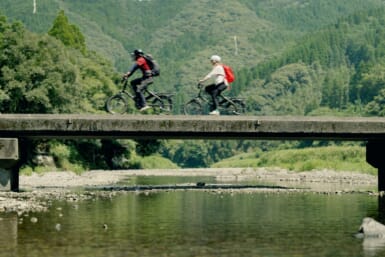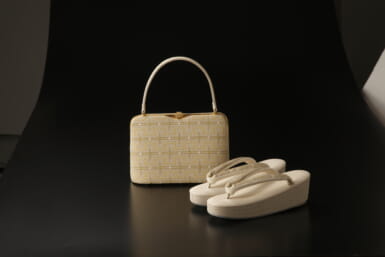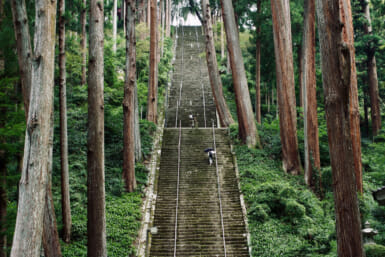Cozy dining at Al Porto Italian restaurant
Tokyo abounds with small restaurants of various culinary persuasions. The problem is to tell the good from the bad without getting stung.
There are many ways to do it. One of the best is by instinct. If you have that, you can’t miss, I knew a Hungarian whose family had been counts before social change had caught up with it. He had it. He liked lo comb the French countryside hunting for that good little restaurant and never failed to turn one up. When I asked how he did it, he said that he just “followed his nose.” I wish I had a rose like that.
Another way is to consider the outside appearance and the menu, which often is posted outside as a lure. If it stimulates the salivary glands, check the number of customers inside and avoid it if it’s relatively empty. That test is especially applicable to Chinese restaurants and sushi-уа. If others stay away, you slay away.
But the best way, if you lack the nose, is to get someone with impeccable taste to take you to one he likes. You can’t lose by following that rule. That’s how I found a great little Italian restaurant in Nishiazabu. I was taken there by an English friend whose knowledge of Italian food and wine is second to none.
Tony Marwick is the director of the British Tourist Authority for Japan. Though his job is to impress the traveling public with the joys and pleasures that come with visiting the United Kingdom, and he is very effective at it, he is an Italophile at heart. Whenever he takes his holidays, he rents a house in Tuscany where he basks in the sun, eats the local food and drinks the local wine, such as Chianti Classico Riserva, which he obtains from the winegrowers themselves, and an occasional Brunnelo di Montalcino. To him Tuscany is a piece of heaven that got loose and fell to earth in Italy.
He took me to lunch at Al Porto, a little place with only 28 seats in its main dining room. There is another room of ten seats, designed for groups but which can be thrown open in an emergency. Reservations are definitely advisable for lunch and dinner. The number is 403-2916.
It was all that he said it was: delicious, delightful and deserving of a column. I had determined to write about it then. But time passed, things interfered, and I even took a trip to Italy where I saw but did not cat at Milan’s Al Porto, after which the restaurant was named. For that is where chef-owner Mamoru Kataoka had polished up his considerable talents.
When the time came to write about it, I had forgotten all the details. I had to try the place again, but this time I took my wife for her reaction.
She fell m love with it immediately, with its yellow damask tablecloths and napery, its intimacy and everything else about it. She was impressed with its menu and wine list, which emphasized quality rather than quantity. As for the service, it was typically Japanese — superb.
We were tempted by the ¥3,000 Menu di Oggi (table d’hote, set course or what you will), which included Asparagi con salsa aglio (asparagus with garlic sauce), a Mousse di pepelone rosso (sweet paprika mousse), Sauri marinati (marinated herring), Prosciutto crudo con melone (cured ham with melon), Insalata di mare (seafood salad), Spaghetti al pomodoro (spaghetti in tomato sauce), a choice of Pesce at giorno (catch of the day) or Vitello al marsala (veal in Marsala wine sauce) for entree, Insalata misto (mixed salad), coffee and a dessert.
When I asked whether they weren’t giving the store away with such a menu at such a price, the waiter said that, well, the portions were rather small. We decided on the a la carte.
My wife took a Minestrone della casa (the house vegetable soup), ¥1,200. It was thick, as I like vegetable soups, full of vitamins and health. It was also delicious, she said. She followed it with Spaghetti alle vongole (spaghetti with clam sauce). ¥1,800. If there is one thing she makes well—and she makes many things well, as she is an excellent cook (a requirement to be a wife in my house)—it is spaghetti with clam sauce. When she gives such a dish her imprimatur, as she did this one, it’s OK.
For my part I chose Zuppa de cozze (mussel soup), ¥1,200. When it came, all the mussel shells were agape, a sure sign they were fresh. It was a delicious soup, one of the best I have ever had, for there’s nothing better than fresh mussels for a successful soup. My pasta was Spaghetti con funghi porcini (spaghetti with wild mushrooms), ¥2,400. The brown sauce in which the mushrooms had been cooked was delicious and the spaghetti properly al dente.
For wine we selected a half-bottle of Chardonnay Gaja, ¥6.500. It resembled a California Chardonnay more than one from the Cote de Beaune, but it had a distinctive Italian bouquet and flavor.
The wine list, though not extensive, has selections from the major wine-producing areas in Italy as well as French wines.
Al Porto is open for lunch from 11:30 a.m. to 2 p.m. daily and from 5:30 p.m. to 11 p.m. for dinner. You can park along the street at your own risk, though I don’t believe the risk is great.
To get to Al Porto from Nishiazabu junction, you should go towards Tengenji junction and turn into the first street entering on the left. Al Porto is on the corner of the second small street on your left.


